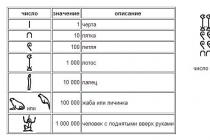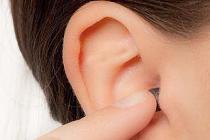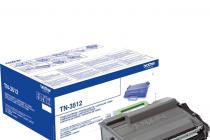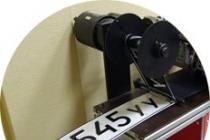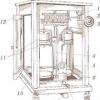LG and Samsung are constantly on the lookout for new technologies to help them operate home appliances. Today, LG and Samsung washing machines have a drum cleaning function, with the help of which debris, unpleasant odors, bacterial contamination and mold fungi are removed from the drum.
The function of cleaning the drum allows you to extend the life of the washing machine for more than ten years, to make your clothes wash better.
With active use of the washing machine, especially in a large family with small children, the drum, as a rule, does not have time to dry therefore there is a risk of mold and bacteria. In this case, the function of cleaning the drum in the washing machine is very necessary.
Cleaning the drum in the lg washing machine is a process that removes various poorly soluble elements such as sand, fabric fibers and others that tend to settle on the walls of the drum.
The main causes of car contamination
Various small objects and dirt can get not only into the laundry container of the washing machine, but also into other areas of this household appliance.
Poorly treated tap water can be a major contributor to the rapid contamination of the machine, along with dirty laundry. Together with dirty clothes in the drum of the device, Substances such as:
- Solid dirt particles;
- Threads;
- Various small items (coins, pins, etc.)
During washing, a fatty residue often accumulates on the drum walls, which can cause the spread of bacteria and mildews.
In order to prevent foreign small particles and dirt from getting into the washing machine, it is enough adhere to the following rules:
- Immediately before starting the washing process, you must carefully check the pockets and clean them of small debris;
- It is recommended to wash things made from thin or damaged fabrics in special bags;
- Before the washing process, you must shake off clothes and other things from dust and dirt;
But even if you adhere to all the basic rules, it is still difficult to prevent the formation of limescale that settles inside the drum, on the heating element and other components of the washing machine.
Limescale can be the main cause of device failure. Plaque is caused by water that contains metal salts. To soften the water used, it is necessary to use agents such as Calgon or Alfagon.
But at the same time, there are expert opinions that the frequent use of these products can damage the parts of the washing machine.
To provide the device with clean water, it is also recommended to install special cleaning filters at the water supply inlet.
How to clean the drum of a washing machine from dirt
Let's consider how to clean the drum of a washing machine from dirt.
In order to activate the cleaning mode in the lg washing machine, you must carry out the following actions:

Drum cleaning process consists of the following main stages:
- Preliminary cleaning;
- The main cleaning, which takes place at a temperature of 60 degrees and a drum rotation speed of 150 rpm;
- Double rinse;
- Push-up.
It is very important to remember that when using this mode it is not recommended to use various chemicals, including for descaling. The automatic cleaning function can also be called eco cleaning of the washing machine.
Traditional methods of cleaning the washing machine
In the absence of a special cleaning function in the washing machine, the hostesses try to clean the device from dirt and limescale. using various folk remedies, for example:
- Citric acid cleaning;
- Soda application;
- Adding vinegar;
 But are folk remedies so effective? Let's consider them in more detail.
But are folk remedies so effective? Let's consider them in more detail.
Cleaning with citric acid is used to remove grease, mold, limescale. It is enough to use this product in an amount of no more than 200 grams.
The advantages of citric acid include low cost, can be used in automatic mode, does not spoil parts.
The disadvantage is considered to be not very high efficiency in case of heavy contamination, if cleaning has not been carried out for a long time and the layer of plaque is very thick... For such cases, it is recommended to clean with more effective cleaning agents.
With the help of baking soda, you can clean the drum, but the spiral and the tank inside the machine are difficult to rinse in this way, and the cleaning process takes a long time.
A positive point when using soda is the fact that the procedure will require no more than 150 grams of powder. And also soda has a low cost, general availability, cleans the walls of the drum well, does not harm parts, does not spoil the eraser.
In order to clean with soda, the walls of the drum must be slightly wetted, then a small amount of soda must be poured onto the rags and the process must be started manually. Then you need to wait half an hour and then remove the soda with a rag.
The next way is removing dirt with vinegar.
Vinegar cleans well not only the walls of the drum, but also other components of the washing machine.
For use, 50 ml of vinegar is diluted in 150 ml of pure water. It is strictly forbidden to use vinegar in undiluted form.
Vinegar cleaning has the following advantages: high quality cleaning, low cost.
The disadvantages include the fact that the vinegar solution is difficult to wash out of the device and corrodes the parts from the eraser.
 Cleaning the washing machine drum is mandatory. It must be run at least once a year. If the washing machine is used very actively, then it is advisable to turn on the cleaning mode even more often.
Cleaning the washing machine drum is mandatory. It must be run at least once a year. If the washing machine is used very actively, then it is advisable to turn on the cleaning mode even more often.
Intelligent operation washing machine will help keep all its parts in working order longer, and the laundry after washing will be fresher and more fragrant.
If you do not forget to periodically turn on the special cleaning function, then the life of the machine will last and it will be possible to avoid unplanned financial expenses regarding the repair of the unit or the purchase of a new one.
2018-09-06 Evgeny Fomenko
Using the self-cleaning function
Any technique requires cleaning and maintenance over time. The self-cleaning mode of the washing machine is a special function that allows you to clean the unit from grease, dirt and other contaminants.
The “Self-cleaning” mode, present in most modern washing machines, was developed by the manufacturer specifically to remove insoluble substances remaining in the drum and tank.
Important: the drum must be cleaned at least once a year. If washing is done more often, then cleaning is required more often. Then the quality of washing will correspond to the norm, and the machine will remain in working order for many years.
To clean the machine using the self-cleaning function, you just need to start this program and wait until it is executed, while remembering that it will not cope with scale, but will only remove mold and grease from the inner surfaces of the washer.
To use the self-cleaning function, you must:

Upon completion of cleaning, unplug the machine and open the loading door for ventilation and drying.
The self-cleaning program cleans the inside of the clipper and removes lint, wool and debris from the clipper. Since the mode provides for the operation of the unit at a temperature of 60 degrees, at a speed of up to one hundred and fifty revolutions per minute, its owner practically does not have to use purchased or folk remedies.
Self-cleaning from the point of view of the unit looks like this:

Experts recommend carrying out such prophylaxis at least once a month. Important: the manufacturers of most washing machines do not recommend the use of chemicals when cleaning the unit, in particular, means for removing limescale and washing powders. Excessive foam generated in the event of their use can lead to a leakage of the washing machine.
On many machines, there is a special button, pressing which immediately activates the self-cleaning process. The prohibition on using the self-cleaning program in conjunction with things in the drum is due to the fact that when this program is executed, the machine accelerates to high revolutions, the drum makes uneven and sharp movements. If there is laundry in it, both it and the machine itself may be damaged.
Self-cleaning washing machines
Most modern models of washing machines from LG, Samsung, Hayer, Hotpoint, Electrolux, Gorenje, Haier, Ariston, Beko, Indesit and many others are equipped with a self-cleaning function.
For example, the BEKO WMI71241 model - with its classic design and a maximum load of up to 7 kilograms of laundry, is equipped with a self-cleaning program - that is, washing with an empty drum at a high temperature without detergents.

The LG F-1296ND3 model is a very popular built-in model, designed for a load of 6 kg of laundry, and also has this feature.
 Washing machine LG F-1296ND3
Washing machine LG F-1296ND3
Manufacturers of the LG brand have made a special series of "Direct Drive" - models of which have at least 10 programs (depending on how much the machine costs, their number varies), among which there is self-cleaning.

A washing machine, along with any other types of household appliances, needs competent care. As a result of operation, fat settles on the drum of the unit and other working parts, mineral deposits and stubborn dirt appear.
They will certainly lead to an increase in the load and subsequent breakdown. Regular cleaning of the drum in the washing machine will significantly increase the service life of the equipment. Let's figure out how to properly clean the drum.
The washing machine, without the slightest doubt, belongs to the mandatory components of a well-equipped home. It is hard to imagine that someone could do without this "tireless home assistant" now. Diligently dealing with our problems, the machine interacts with detergents, technical and food oils, poorly filtered tap water.
In terms of the deposition of dirt, the most vulnerable component of the unit is the drum, which is in direct contact with both the laundry being washed and with powders, conditioners and similar liquid agents. Unfortunately, most housewives judge about drum pollution only by the fact that it resembles the "aromas" of a swamp.
Image gallery




In fact, smell is not the most insidious enemy of washing technique, although the utmost attention should be paid to it. It signals the appearance of putrefactive bacteria and that harm the things processed by the machine, and not the working units and parts.
Note that the atmosphere formed by microorganisms poses an extremely serious threat to the health of owners of premises with a washing machine. This means that one should fight it with zeal worthy of its significance.
The danger to the functional parts of washing units lies in mineral deposits. This scale settles both on the surface of the drum accessible to users and on the back of it. If the first component can be easily dealt with with folk remedies, then to eliminate the second, it is often required to remove the tank with a drum.

Regular care of the washing machine, cleaning its components from scale, grease deposits and other contaminants will significantly increase the period of flawless operation without breakdowns and repairs
The list of problems created by scale includes:
- Disruption of water circulation during washing. The perforation of the drum clogged with sediment prevents the normal inflow and outflow of water.
- Failed drain pump. By “pushing” water through a filter clogged with scale, the pump experiences almost cosmic loads and eventually breaks down.
- Deceleration of water heating. The thermal conductivity of the mineral sediment is noticeably lower than that of the metal parts of the machine without it. As a result, mineral deposits affect the quality of the wash.
- Increased energy consumption. Units and systems operating in load mode consume more electricity.
- Accelerated wear of the tank and drum pulley. Mineral sediment promotes abrasion of contacting and closely spaced elements.
Limescale appears due to the supply of water with an impressive content of magnesium and calcium salts into the machine. The installation of main filters will help to exclude or significantly reduce the flow. However, they will not be able to completely eliminate the likelihood of sediment formation. Those. you still have to clean the unit, though much less often.

Almost all washing machine drums are not afraid of rust. in the manufacture of materials resistant to it are used. Exception - cheap devices of dubious production
Of course, rust is also a dangerous factor for washing machines, but it is mainly the case that suffers from it. The drums are made of materials adapted to work in water with household chemicals. Although this does not mean at all that cheap units are not susceptible to rusting.
In order to exclude all possible prerequisites for shortening the service life of the machine and conditions that threaten the health of the owners, regular, competently performed care is required. The peculiarities of its implementation should be dealt with.
Washing drum care methods
We have already found out that scale is the most harmful to the drum, and bacteria and fungi to the health of the user. It is clear that to declare war on microorganisms, disinfectants are needed, and to remove mineral deposits, substances that can dissolve it are required.

In the fight against both negative aromas and mineral deposits, methods are used that are similar in essence and methods of implementation: the drum is processed with a ready-made or home-made preparation, then washing without laundry is started
The principle of cleaning the drum in both situations is to treat its surface, for which the owners of the machines have two methods at their disposal, these are:
- Using the cleaning mode. It is possible to use only in units with the specified function, for example, in LG equipment with ECO cleaning mode.
- Application and rinsing of a composition with an action corresponding to the problem. It is used in automatic and semi-automatic machines without the above function.
Both methods involve carrying out a kind of "washing", but without loading the laundry. In the first case, the equipment corny "rinses" the drum and other components with hot water, in the second - the unit is turned on for banal flushing of the substance previously applied to the drum.
Image gallery




Using the autovacuum function
Happy owners of machines with a drum cleaning mode do not need to spend their personal time on carrying out, frankly, difficult maintenance. Their equipment is independently freed from greasy deposits, residues of detergents, grains of sand and fine organic matter. Everything that the unit did not handle during the washing period is dissolved and removed.
Cleaning is done in three standard steps:
- The normal pre-mode is activated.
- The cleaning function is activated, which is carried out at 90 ° C and at a speed of 150 rpm. There are washing machines on the market that do the same job at 50 - 60 ° C.
- The spin cycle double rinse starts at the maximum speed.
Before rinsing the drum of the washer, it is imperative that nothing interferes with the drainage of the water. Note that the described procedure does not eliminate mineral deposits. In order to get rid of scale, a bag of "Antiscale" or citric acid is poured into the receiving cuvette of the machine before starting.
Image gallery




At the end of the program, the hatch of the machine should be opened or at least opened at an angle that does not impede free movement in the bathroom or kitchen. The moisture remaining in the drum must completely evaporate, after which it must be wiped off with a dry, "not dusty" cloth, ie. does not leave fibers on the surface.
It should be remembered that double rinsing is simply obliged to completely remove all the product and the scale dissolved by it from the tank. If there is a suspicion that the substance used in cleaning is not all washed away with water, the process should be repeated. Otherwise, during a normal wash, the laundry will fade, shed, and after that it will wear out faster.
The described very useful mode, unfortunately, is not available for all washing machines. If the owners of the equipment did not manage to buy such a machine, the actions are performed in a different order.
Image gallery




The use of folk techniques
Let's start with intimidation and enumeration of the horrors that threaten the use of overly active agents to cleanse the drum.
The results of the use of unjustifiably corrosive substances include:
- Softening and deterioration of seals. In particular, deformation of the rubber cuff of the loading hatch, requiring immediate.
- Damage to the metal surface of the drum. The appearance of roughness and even burrs will cause the clothing to lose its appearance.
- Changes in the shape and size of plastic parts, as a result, the formation of backlash, loosening of the joints.
- Jamming of the moving elements of the machine due to a large piece of undissolved scale getting into the gap between them.
- Clogged drain filter and subsequent.
In addition, if strong chemicals are not completely removed from the drum surfaces, they will enter the water during the wash. Linen that has absorbed a caustic substance will cause allergies, it is possible that a chemical burn.

Effective drum cleaning can be carried out by all familiar cheap and affordable means available in the kitchen of any housewife
Given the above circumstances, the use of "folk recipes", especially their dosage, should be treated with utmost care.
We remember that in order to remove the mineral sediment, we need to dissolve it or at least soften it. This is easy to do without a master, without disassembling the unit into its component parts and without removing the drum outside. To do this, from quite affordable and really inexpensive ingredients, you will have to prepare a composition that corrodes sediment, but does not affect the working organs of the unit.
Image gallery




Any housewife can find the starting material for the cleansing mixture in her own adored kitchen. To combat magnesium and calcium salts, you just need ordinary table vinegar, and citric acid and soda are just as unremarkable. They fit perfectly and cost just a dime.
Method number 1 - soda with vinegar against scale
For mixing in the required proportions, we stock up with a plastic cup with a volume of 50 - 100 g, and a sponge. If there is no ready-made nine percent vinegar in the house, it must be made by dissolving one part of the essence in seven parts of water.
To clean the drum, we will proceed in the following order:
- We measure out 1/4 of a plastic cup of baking soda and exactly the same volume of water, mix them until the powder is completely dissolved.
- Pour this cool soda solution into the machine's box for loading detergents.
- Take 2 cups of 9% vinegar and pour them into the drum.
We close the hatch as expected, open the tap that blocks the flow of water into the supply hose from the water supply. On the control panel, set the temperature to 60 - 70 ° C, start the washing "session". Upon completion of cleaning, we clean the filter of the drain system, leave the unit with an open hatch to dry, then wipe it dry.
Method number 2 - citric acid
The next way is much easier. For him, in general, only citric acid is needed, the volume of which is selected according to the volume of the machine's tank. You will need 1 to 6 standard packs.

To clean the drum with a lemon, it is diluted in equal parts with water. The solution is poured into a cuvette for loading funds and the unit for washing and rinsing is started
To clean the drum of the clipper, do the following:
- We dilute the powdered lemon with water in equal parts.
- Pour the solution into the detergent box.
- Let's start the longest wash cycle.
At the time of cleaning with the indicated method, you must select the maximum temperature. Further actions are no different from the steps described above.
Detailed instructions for cleaning the washing machine with citric acid can be found at.
Method # 3 - cleaning with soda powder
You will need a sponge with a hard pad on one side and a pack of soda, its real consumption is determined during cleaning. You do not need to prepare a baking soda solution.
In the matter of cleaning the drum, follow these steps:
- Pour soda on a hard sponge pad and carefully wipe off the dirt.
- As the soda is consumed, add it to the sponge. In the case of a weak reaction of soda and scale, slightly moisten the sponge.
- We leave the drum at rest for half an hour, until the calcium build-ups soften.
- We activate washing by setting the temperature to 70 - 90 ° C.
- We set the double rinse mode on the control panel.
If at the end of the rinse it feels like the drum has not been thoroughly rinsed with baking soda, the machine will have to be started again. However, it will be necessary to maintain the time interval specified by the manufacturer between two washing sessions taking place one after another.

Do not prepare a solution to clean the drum with soda. Dry powder forcibly rub the surface of the drum until the dirt disappears
In addition to popular wisdom and the compositions it proposed, household chemicals are used in the cleaning work, purposefully produced to solve the indicated tasks.
The packaging with the product traditionally contains detailed instructions for its use and dosage recommendations.
You should not get carried away with harsh measures in the care of the washing machine drum; it is better not to bring the equipment to such a sad state.

Care for the drum of your top-loading washing machine uses the same methods as for cleaning a front-loading washing machine.
To prevent the formation of mineral deposits on the drum walls:
- Use . In the data sheets of automatic and semi-automatic devices, the frequency of use of drugs of the Calgon type is indicated. It depends on the formula of plastic and elastomers of specific models.
- Install a softener filter. The inclusion of filtering mechanical and magnetic devices in the water supply system will relieve the entry of hard water into the tank of the machine.
- Wash mainly at 40 - 50 ° C. In the process of high-temperature washing, scale forms much more intensively than at low temperatures.
- Check the pockets of things loaded into the unit. Before washing, the contents of the pockets should be carefully checked so that objects that pose a risk of clogging do not get inside.
- Ventilate the tank regularly. Allow the parts of the washing machine to dry.
- Do not clean the unit with a direct stream of water. Prevent even drops from entering the electronic control system.
- Take care of your machine regularly. To extend the working life of the unit, regular maintenance is required. The manual steps only need to be performed when disconnected from the power supply.
It is also not necessary to pour more powder into the box than is required for the production of one wash. To combat unpleasant odor, the use of chlorine-containing varieties of household chemicals is permissible.
Conclusions and useful video on the topic
Care and maintenance of washing machines with a drum cleaning function:
How do you clean the drum in your washing machine? Share your own care methods with our readers - leave comments, share experiences, ask questions in the block below.
The washing machine is mainly used often and the drum of the equipment does not always have time to dry out, which leads not only to an unpleasant odor, but also to the proliferation of bacteria by fungi. Most washing machine users do not even know that they can use the very useful drum cleaning function. Basically, the range of programs used is small - 2 or 3 main modes. But washing equipment requires regular maintenance to avoid build-up and build-up. This is where the "drum cleaning" function comes in handy, which is an hour and a half program that starts the process of washing the drum from small debris and greasy (soap) deposits. How to use the lg drum cleaning function, for example? This procedure is required. It removes all substances that could not dissolve during the washing process. It is a pity that not all models are equipped with it.
How the Drum Clean function works
 Cleaning looks like a regular wash without laundry and consists of several stages:
Cleaning looks like a regular wash without laundry and consists of several stages:
- The pre-wash cycle is activated.
- The main mode starts or cleaning at 60 degrees with up to 150 rpm.
- The program ends with a double rinse and spinning at the maximum possible speed.
To prevent plaque and blockage, it is sufficient to carry out a preventive cleaning of the drum twice a month. We strongly recommend that you clear the debris before running this function.
Important note! Using this cycle does not remove or prevent limescale build-up.
How to enable lg drum cleaning function
This feature is very easy to turn on. For easy and quick access, it has been programmed so that it is enough to press one button. How to do it?

LG washing machines do not like adding detergents or special agents when cleaning. Failure to comply with this condition leads to the formation of an excessive amount of foam up to the hang of the equipment.
Why is the lg drum cleaning function needed?
Often small objects get into the washing machine with the laundry:

In order to prevent equipment breakdown, it is enough just to check the things loaded into the washing drum and not allow foreign objects to enter. It is also important to remove lumps of dirt, and when washing delicate laundry, use special bag.
 Dirty water can also cause clogging and technical problems. Metal salts are left on the internal moving parts of the machine, so the use of special compounds for washing or a water filter would be an excellent option. These tools include Calgon and Alfagon... Although the opinion of experts is ambiguous. Some of them are sure that in addition to soft water, they harm the technology itself because of the chemical compounds they contain. Filters they will relieve not only plaque and clogging, but also all internal parts, since they purify the water already at the entrance to the washing machine.
Dirty water can also cause clogging and technical problems. Metal salts are left on the internal moving parts of the machine, so the use of special compounds for washing or a water filter would be an excellent option. These tools include Calgon and Alfagon... Although the opinion of experts is ambiguous. Some of them are sure that in addition to soft water, they harm the technology itself because of the chemical compounds they contain. Filters they will relieve not only plaque and clogging, but also all internal parts, since they purify the water already at the entrance to the washing machine.
Even the most careful use of an LG washing machine involves cleaning it up from time to time. Can the washing machine be cleaned at home? And how to do this in order not to harm the complex automation of the FH2A8HDN4 unit?
A few simple tips can help you clean your LG washing machine from dirt at home. This does not require any special knowledge or special skills. You just need to follow the directions described here.
What are we cleaning?
First, let's figure out what needs to be cleaned in the FH2A8HDN4 washing machine. We need to free the following components from contamination:
- drum;
- drain hose;
- filter;
- compartments for powder, conditioner and bleach;
- sealing gum;
- pump (drain pump).

How do I clean the filter?
Most often (about every 4 washes) you need to clean the filter. To clean a filter in an LG washing machine, you need to know where it is located. It is usually located at the bottom of the façade. The FH2A8HDN4, like most LG machines, has a plastic panel on top. If you do not know where to look for it, use the instructions.
The panel must be pushed down with a screwdriver by pressing the valve. In this model, it is not removed, but only lowered. The filter is taken by a special protrusion and twisted counterclockwise by hand until it comes out freely from the hole. Attention! There are two important rules to follow here:
- The filter is removed only after all the water has flowed out of the hose.
- After removing the filter, water usually flows from the pipe. Remember to substitute the dishes.
Now we remove all the accumulated dirt (to be sure, you can shine a flashlight into the hole), and then wash the filter under running water. We put everything back in the reverse order: first we screw in the filter, then close the panel until we get a click.

What do you need to clean the drum?
Every six months or a year, you need to clean the drum of the LG washing machine, as well as the water heater, sealing rubber and powder compartment. Several cleaning methods are possible here.
Chlorine bleach
If there is a moldy smell and ugly stains are visible under the sealing gum, then it is better to use regular whiteness. Today it is not very popular at home, but it is suitable for cleaning the LG washing machine from an unpleasant damp odor, soapy dirt and mold. Moreover, it is a very effective (though not very pleasant smelling) remedy.
For cleaning, pour 100 g of whiteness into the powder compartment and all other compartments equally and turn on the FH2A8HDN4 at full power at a temperature of 90 ° C. After 20 minutes, stop the cycle and let it stand for about half an hour. Then we drain the water and turn on the rinse. When the cycle is over, open and wipe the door and the gum of the seal dry and leave the machine open until it is completely dry. This procedure should be carried out every six months to clean the machine of dirt and prevent fungus from starting.

Acid
Use regular citric acid to descale the drum. You will need it 100-150 g. This simple descaling procedure on your LG washing machine can significantly extend the life of your device. The composition of citric acid is absolutely harmless for all parts and assemblies without exception, but it is excellent for descaling.
With its help, we will descale all parts: heater, drum, pump wrapper. We do the following:
- pour citric acid into all compartments for powder, bleach, conditioner;
- we turn on the machine at full power and at the highest number of revolutions, as well as the greatest operating time;
- when the cycle is completed, we check the unit from the inside - if it was not possible to obtain perfectly shiny surfaces, we repeat the procedure.

We clean the drain hose, pump and other parts of the machine
It is not uncommon to clean the drain on your LG washing machine. To do this, you need to pour a mixture of bleach and expensive powder for an automatic machine and turn on the "hot" mode, in which the water heats up to 90 ° C. When the water reaches the desired temperature, shut off the operation and drain the water. That's it - the hose is clean. If the smell has not disappeared, the procedure must be repeated.
If you use economy-class powder, dirt will accumulate on the rubber bands and compartments for washing powder and conditioner (this is not dissolved or washed off soap). This will gray out the parts of the machine and can lead to unpleasant odors from the washed items. You can remove it with a regular baking soda solution. You need to mix it with any detergent and wipe all the soiled places (ratio: 1 tbsp. L. Soda and 1 tbsp. L. Means for 1 liter of warm water). But if that doesn't work, use bleach as described above.
It is not easy to clean the water drain pump (pump) in the LG washing machine, including in the FH2A8HDN4 type machines. The video will tell you in detail about this. To do this, you will have to stock up on a set of screwdrivers and a basin for drainage water. You will need to untwist it and remove the bottom, and only then pull out the pump itself and clean it of dirt.


